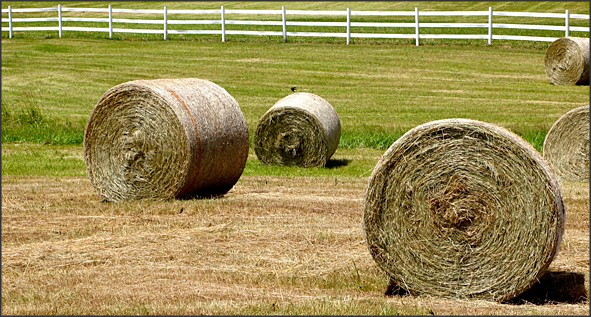Farming Hay: Cultivating Feed for Livestock

Source : https://www.morningagclips.com
farming hay is an important part of livestock production. Hay is a type of forage, or feed, that is grown specifically for livestock. It is typically made up of grasses, legumes, and other plants that are cut and dried before being stored for later use. Hay is an important source of nutrition for livestock, providing them with essential vitamins and minerals. It is also a great way to preserve the nutrients in the plants for later use. farming hay requires careful planning and management, as well as the right equipment and techniques. With the right knowledge and resources, farmers can successfully cultivate hay to provide their livestock with the nutrition they need.
The Benefits of Growing Hay for Livestock Feed: Exploring the Advantages of Cultivating Hay for Animal Nutrition.
Growing hay for livestock feed is an important part of animal husbandry and can provide numerous benefits to farmers and ranchers. Hay is a type of forage, or feed, that is made from grasses, legumes, and other plants that have been cut and dried. It is a valuable source of nutrition for livestock, providing them with essential vitamins, minerals, and proteins.
The primary benefit of growing hay for livestock feed is that it is a cost-effective way to provide animals with the nutrition they need. Hay is relatively inexpensive to produce and can be stored for long periods of time, making it a great option for farmers and ranchers who need to feed their animals on a budget. Additionally, hay can be grown in a variety of climates and soil types, making it a viable option for many different types of farms and ranches.
Another advantage of growing hay for livestock feed is that it can help to improve the health of animals. Hay is a natural source of fiber, which helps to keep animals’ digestive systems functioning properly. It also provides essential vitamins and minerals that are necessary for the growth and development of livestock. Additionally, hay can help to reduce the risk of certain diseases, such as bloat, which can be fatal in some animals.
Finally, growing hay for livestock feed can help to improve the quality of the soil. Hay is a natural fertilizer, as it adds organic matter to the soil and helps to improve its structure. This can help to increase the fertility of the soil, making it more productive and allowing farmers and ranchers to grow more crops.
In conclusion, growing hay for livestock feed can provide numerous benefits to farmers and ranchers. It is a cost-effective way to provide animals with the nutrition they need, and it can help to improve the health of animals and the quality of the soil. For these reasons, growing hay for livestock feed is an important part of animal husbandry and should be considered by anyone who is looking for a way to provide their animals with the nutrition they need.
The Challenges of Growing Hay for Livestock Feed: Understanding the Difficulties of Cultivating Hay for Animal Nutrition
Growing hay for livestock feed is a challenging endeavor that requires a great deal of knowledge and skill. Hay is a vital source of nutrition for animals, providing them with essential vitamins, minerals, and energy. As such, it is important for farmers to understand the difficulties of cultivating hay for animal nutrition.
The first challenge of growing hay for livestock feed is the selection of the right type of hay. Different types of hay have different nutritional values, and it is important to choose the right type for the animals’ needs. For example, alfalfa hay is high in protein and calcium, making it an ideal choice for dairy cows, while timothy hay is high in fiber and is better suited for horses.
The second challenge of growing hay for livestock feed is the timing of the harvest. Hay must be harvested at the right time in order to maximize its nutritional value. If it is harvested too early, the hay will be immature and low in nutrients. If it is harvested too late, the hay will be over-mature and may contain mold or other contaminants.
The third challenge of growing hay for livestock feed is the storage of the hay. Hay must be stored in a dry, well-ventilated area in order to prevent mold and other contaminants from forming. It is also important to store hay in a way that prevents it from becoming too wet or too dry, as this can reduce its nutritional value.
Finally, the fourth challenge of growing hay for livestock feed is the cost. Hay is a costly crop to produce, and the cost of production can vary greatly depending on the type of hay, the location, and the time of year. As such, it is important for farmers to understand the costs associated with growing hay for livestock feed in order to ensure that they are able to make a profit.
Overall, growing hay for livestock feed is a challenging endeavor that requires a great deal of knowledge and skill. By understanding the difficulties of cultivating hay for animal nutrition, farmers can ensure that their animals are receiving the best possible nutrition.
Conclusion
farming hay is an important part of livestock production, providing a nutritious and cost-effective feed source for animals. With careful management, hay can be a sustainable and profitable crop for farmers. By understanding the different types of hay, the best practices for harvesting and storing hay, and the nutritional needs of livestock, farmers can ensure that their hay crop is of the highest quality and provides the best nutrition for their animals.





